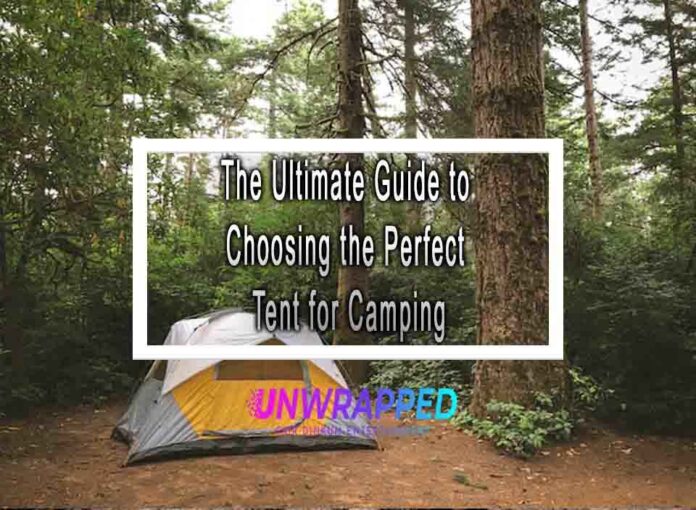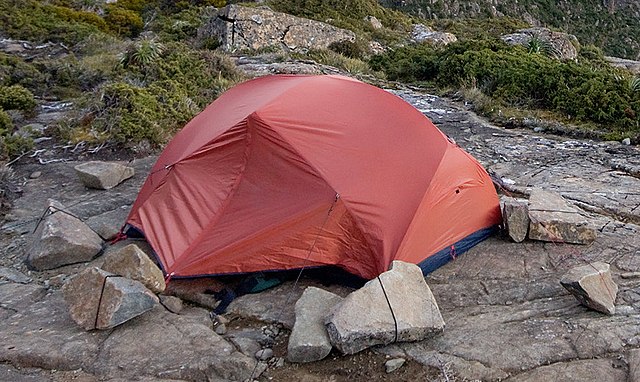Choosing the perfect tent for camping is essential for a comfortable and enjoyable outdoor experience. With various tent options available, it’s important to consider your specific needs and preferences. Here’s a comprehensive guide to help you select the right tent:
1. Tent Types:
- Dome Tents: These are freestanding tents with a simple, dome-shaped design. They are easy to set up and offer good stability in moderate conditions.
 Cabin Tents: Cabin tents have near-vertical walls and offer more headroom and living space. They are great for family camping but may be bulkier and heavier.
Cabin Tents: Cabin tents have near-vertical walls and offer more headroom and living space. They are great for family camping but may be bulkier and heavier.- Backpacking Tents: These tents are designed for lightweight and easy portability. They are compact and ideal for solo or small-group backpacking trips.
- Tunnel Tents: Tunnel-shaped tents are easy to set up and provide good wind resistance. They are suitable for various conditions.
- Pop-Up Tents: Pop-up tents are incredibly easy to set up and are ideal for quick camping trips or festivals.
2. Capacity:
- Consider the number of people who will be using the tent. Tents are typically categorized as 2-person, 3-person, 4-person, and so on. For comfort and space for gear, it’s often a good idea to choose a tent that accommodates one or two people more than you have.
3. Seasonality:
- Tents are categorized by the number of seasons they can handle:
- 3-Season Tents: Suitable for spring, summer, and fall. They provide good ventilation and protection against rain and bugs.
- 3-4 Season Tents: Designed for spring, summer, fall, and some winter conditions. They offer added durability and insulation.
- 4-Season Tents: Built for extreme conditions, including winter. They provide superior insulation, wind resistance, and durability.
4. Weight:
- If you plan on backpacking, weight is a crucial factor. Backpacking tents are generally lightweight, while car-camping tents may be heavier but offer more space and comfort.
5. Weather Resistance:
- Look for a tent with a rainfly that covers the entire tent and is made of durable, waterproof material. Taped seams and a bathtub-style floor (a floor that extends up the sides) help keep water out.
6. Setup:
- Ease of setup is important. Freestanding tents are generally easier to pitch. Color-coded or clip-together poles can simplify the process.
7. Vestibules:
- Vestibules are extensions of the rainfly that create covered storage areas for gear and provide extra protection from the elements.
8. Ventilation:
- Proper ventilation is key to reducing condensation inside the tent. Look for tents with mesh panels, windows, and vents for airflow.
9. Durability:
- Choose a tent made of durable materials, including a robust rainfly, sturdy zippers, and reinforced seams. Consider the denier rating for the tent fabric – a higher number indicates greater durability.
Remember that choosing the perfect tent for camping depends on your specific needs and the types of trips you plan to take. Take your time to evaluate your options, and if possible, set up the tent before your trip to ensure you’re comfortable with its setup and features. A well-chosen tent will provide a cozy and secure shelter for your camping adventures.



 Cabin Tents:
Cabin Tents: 






